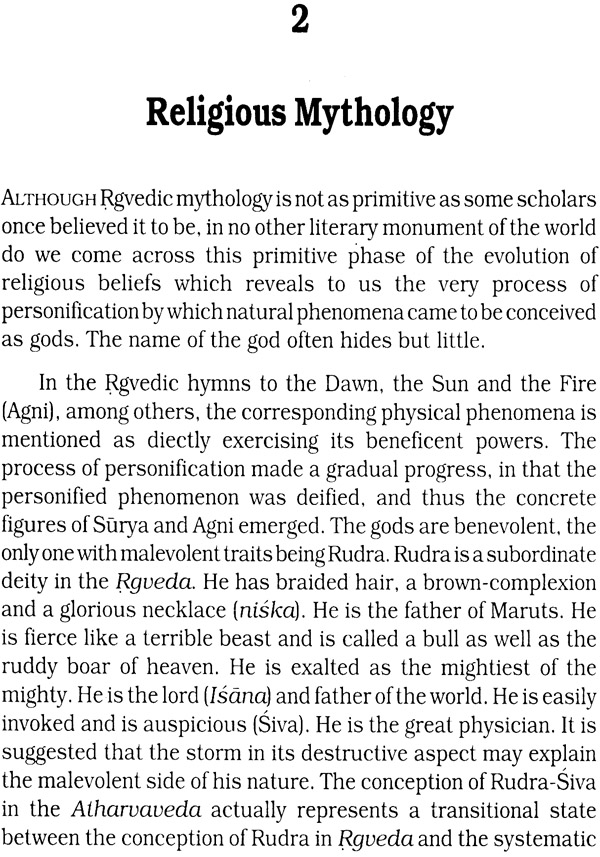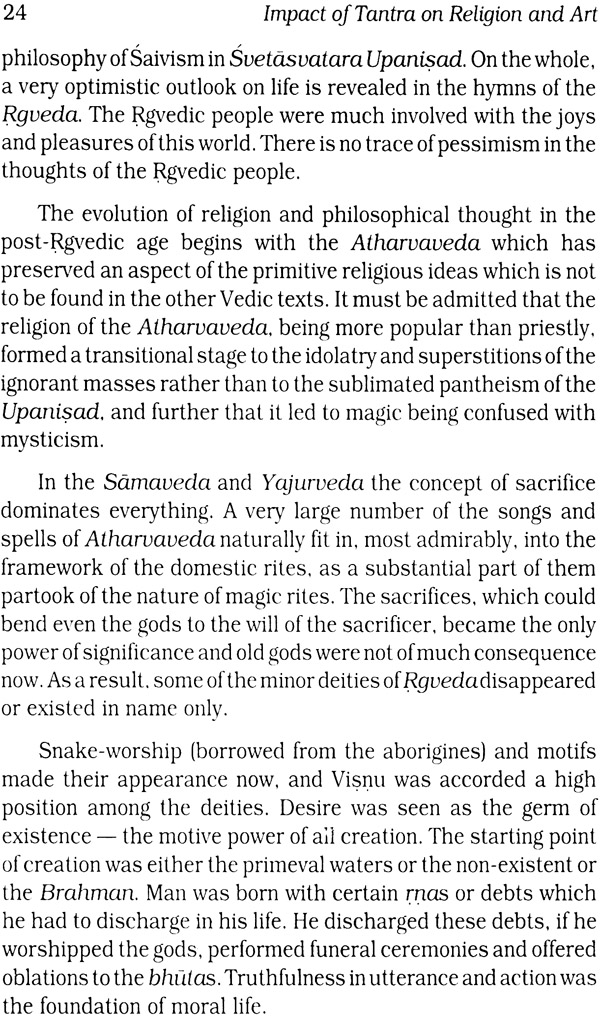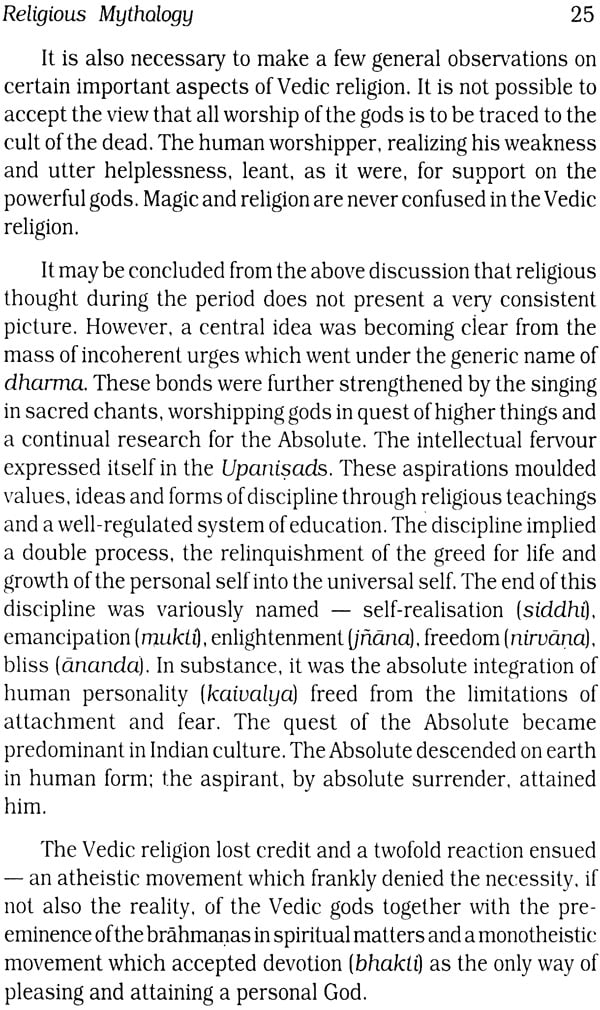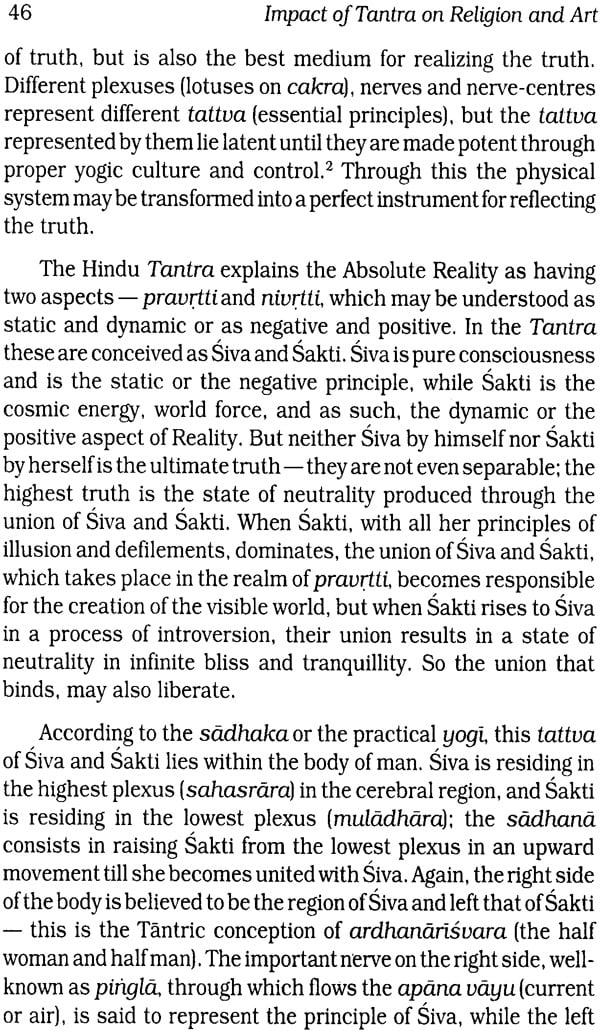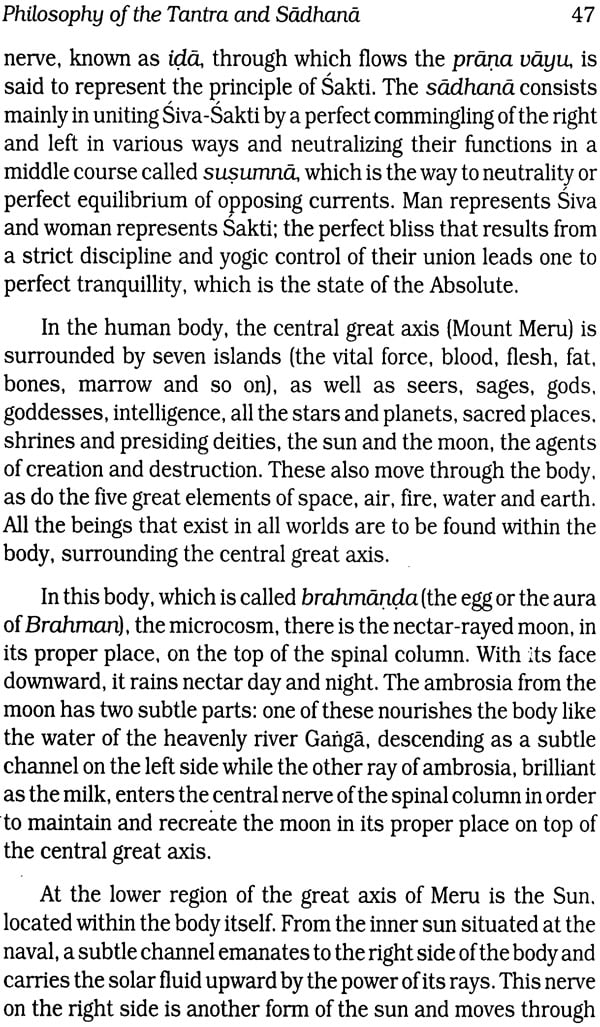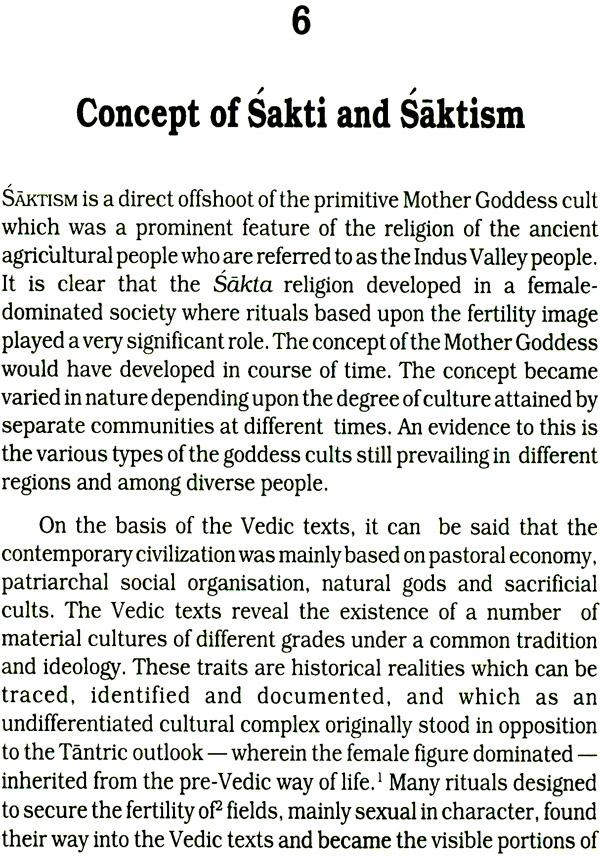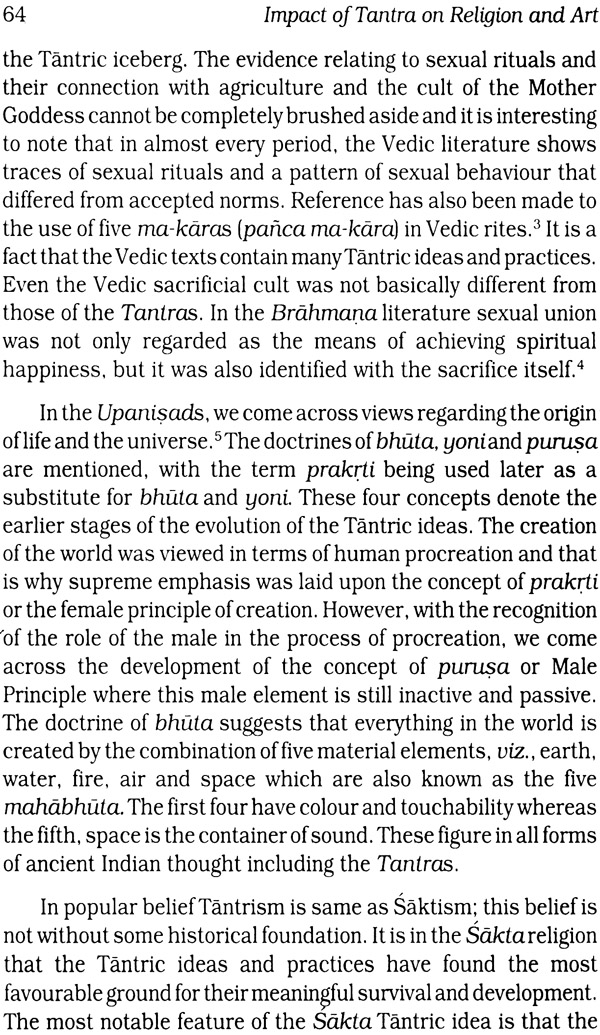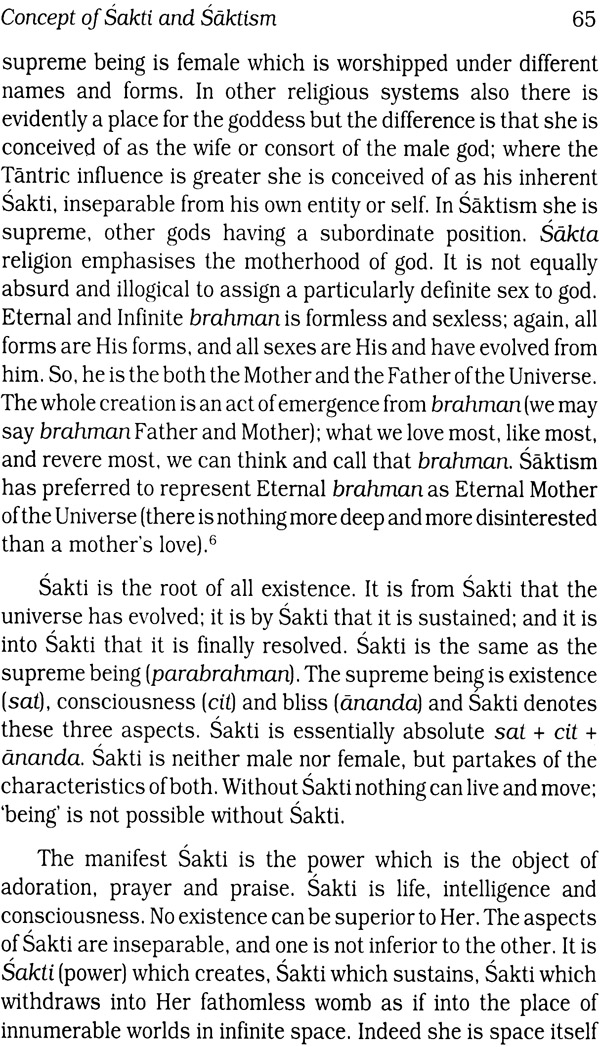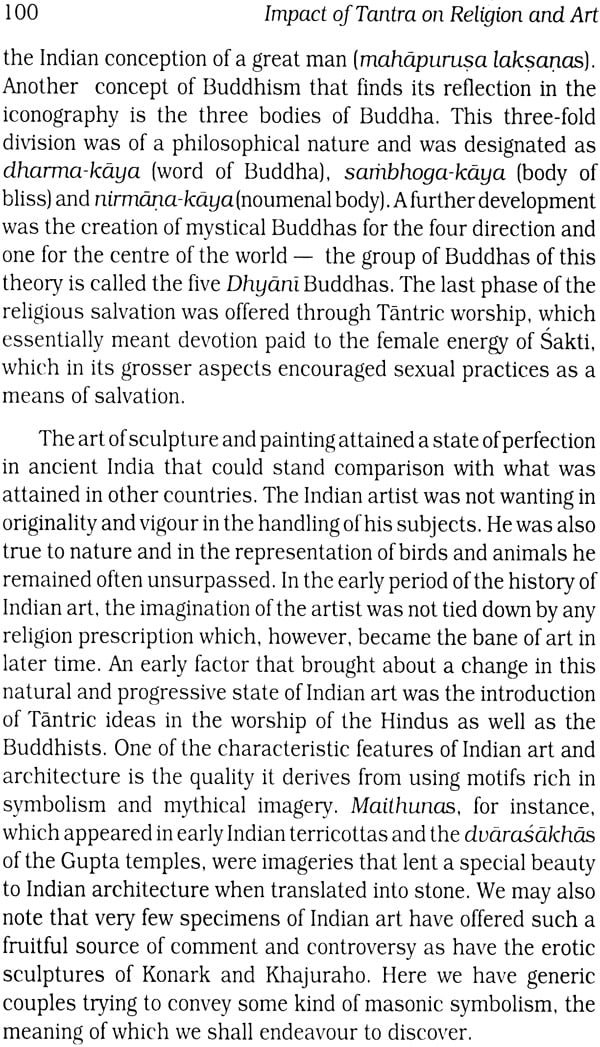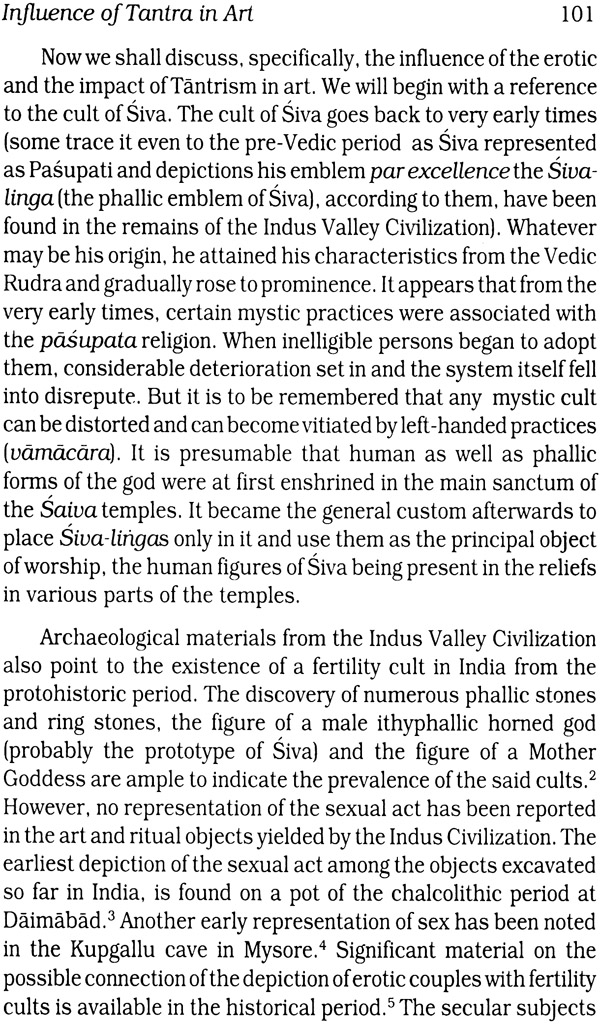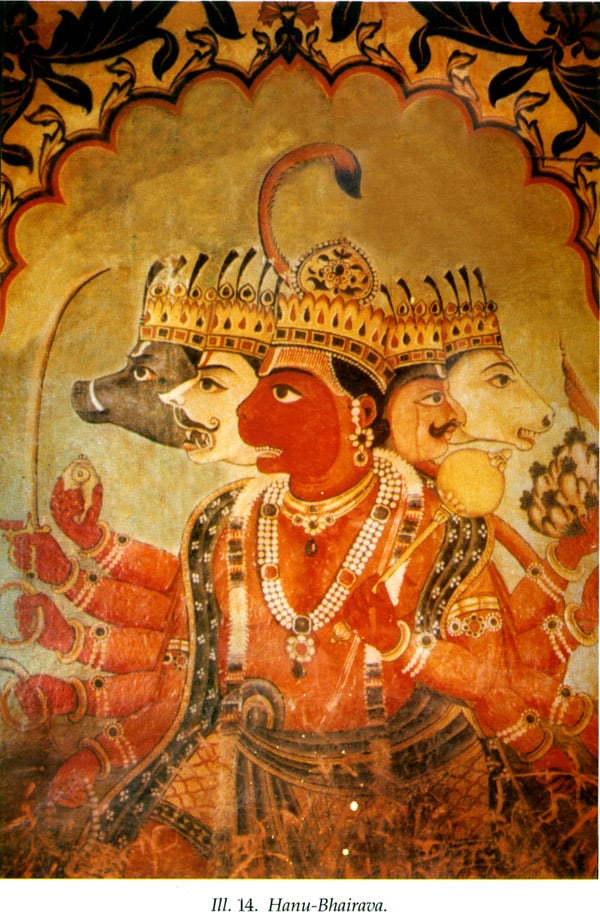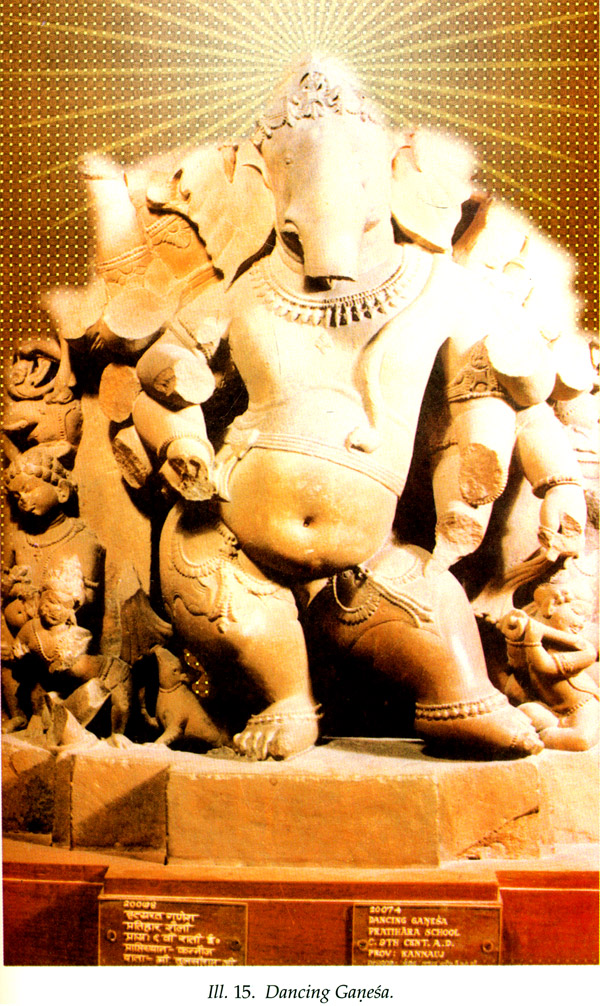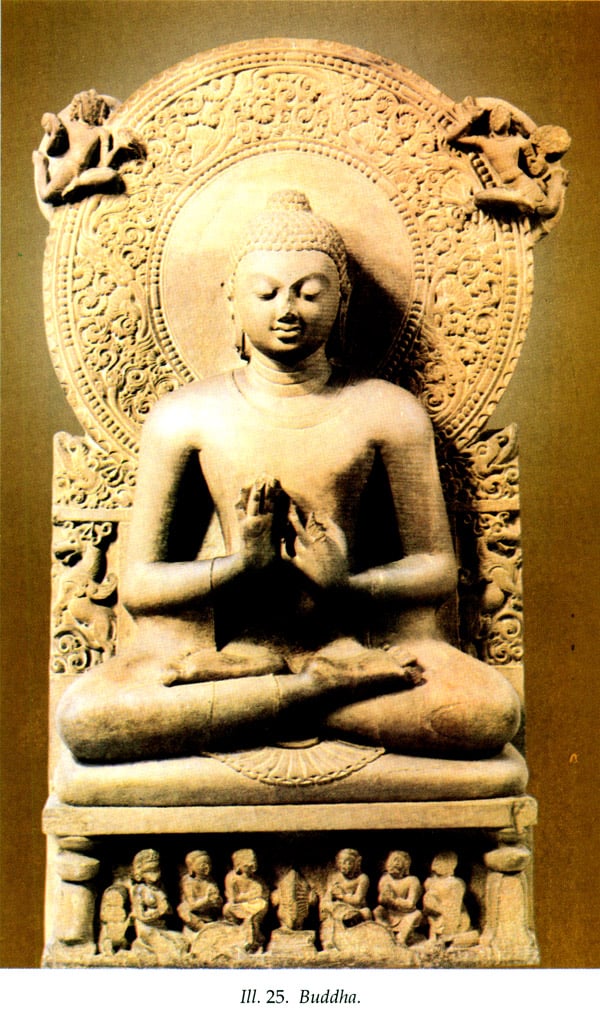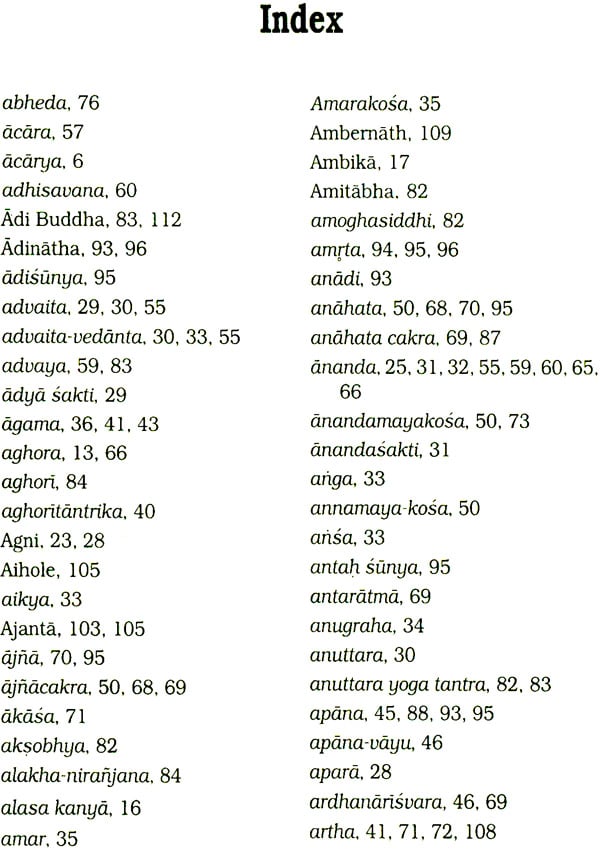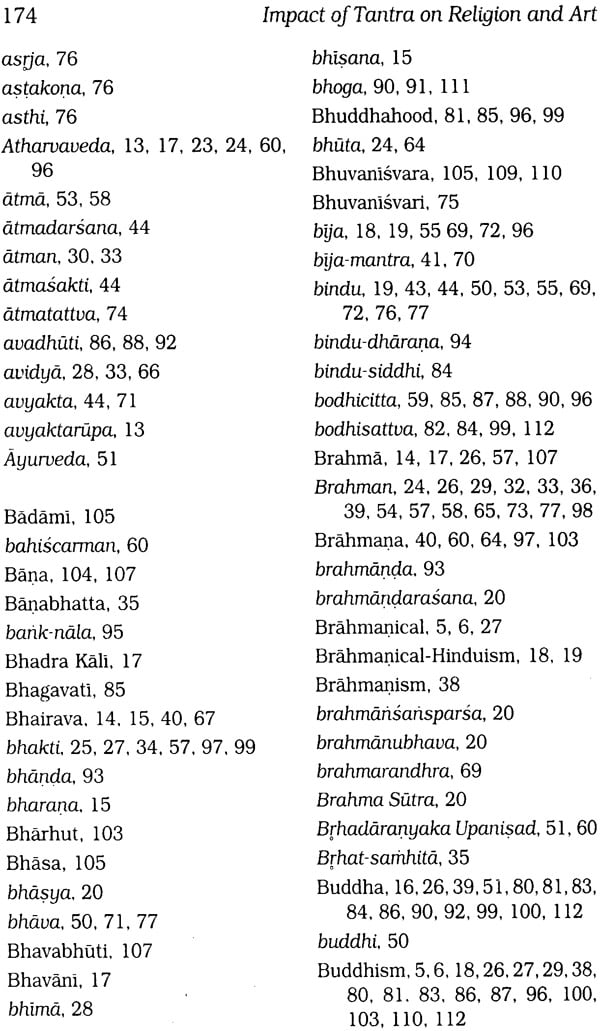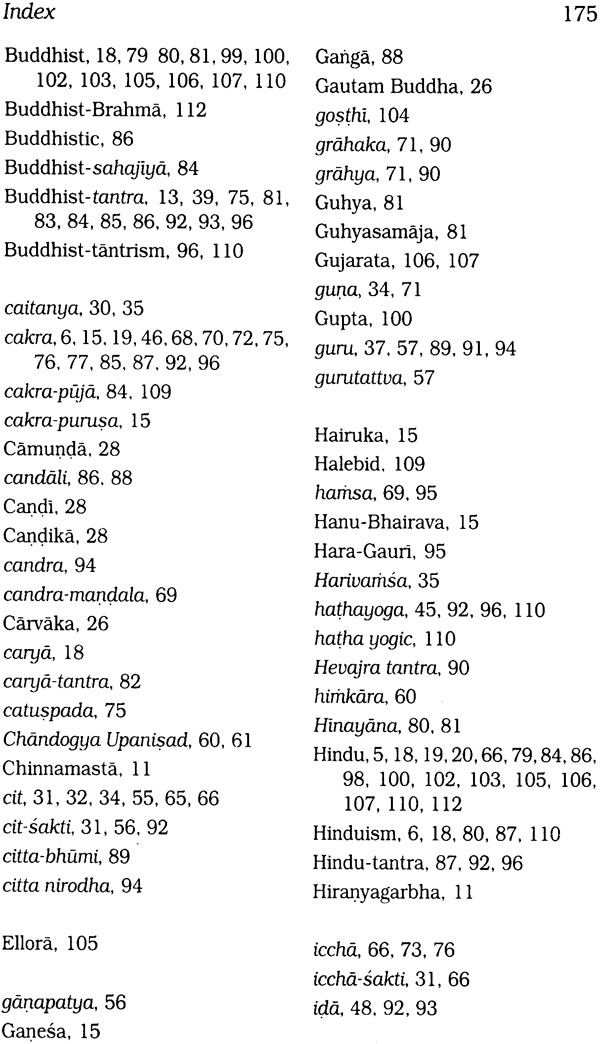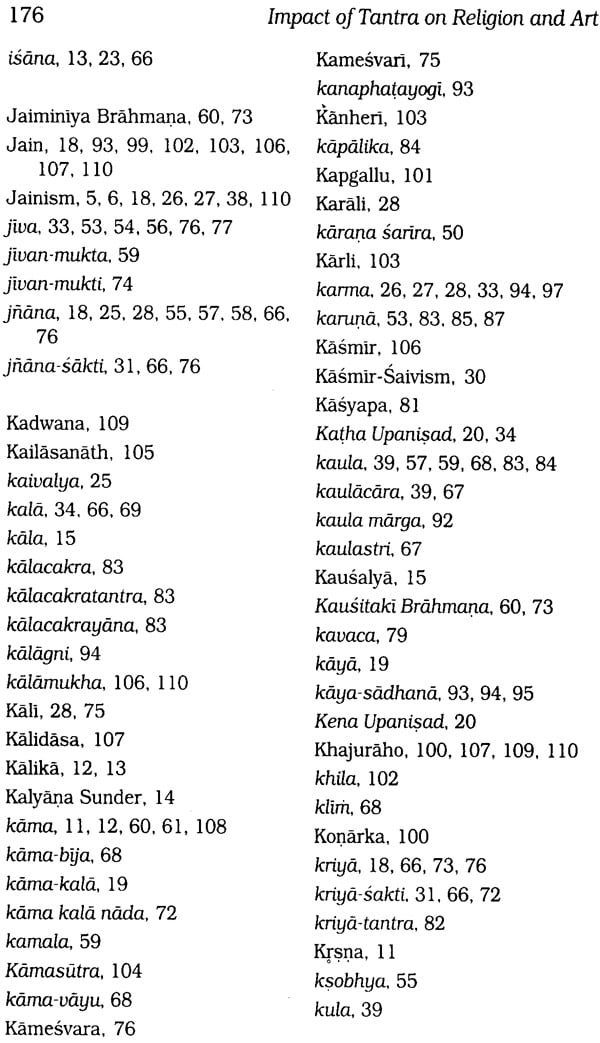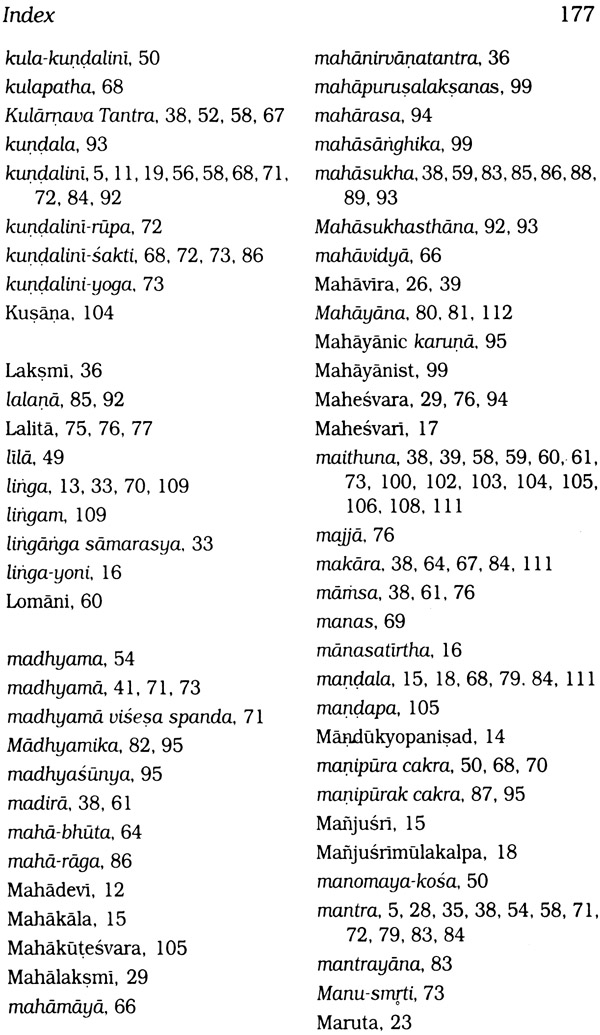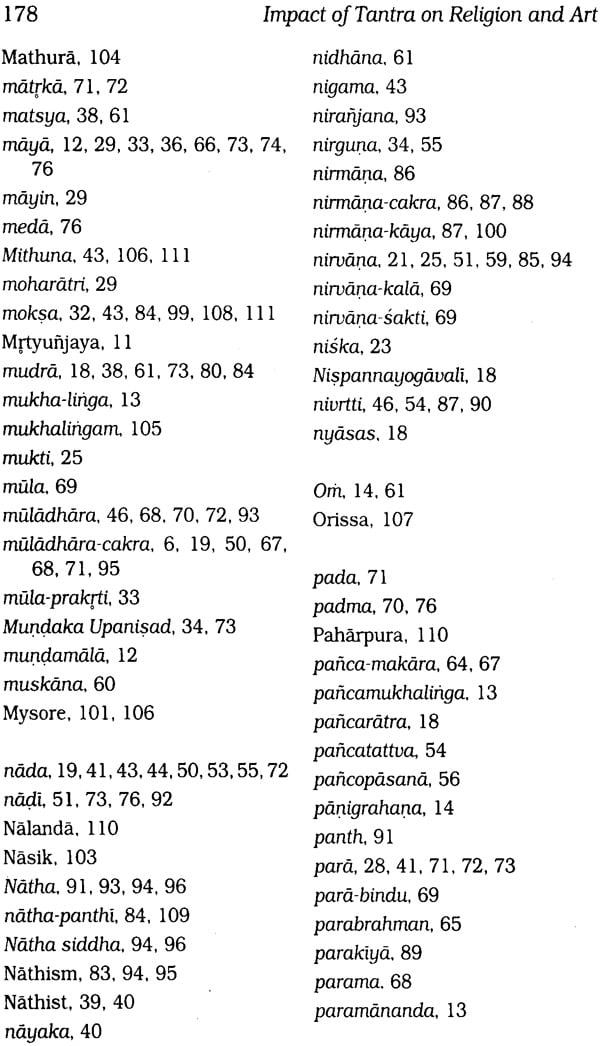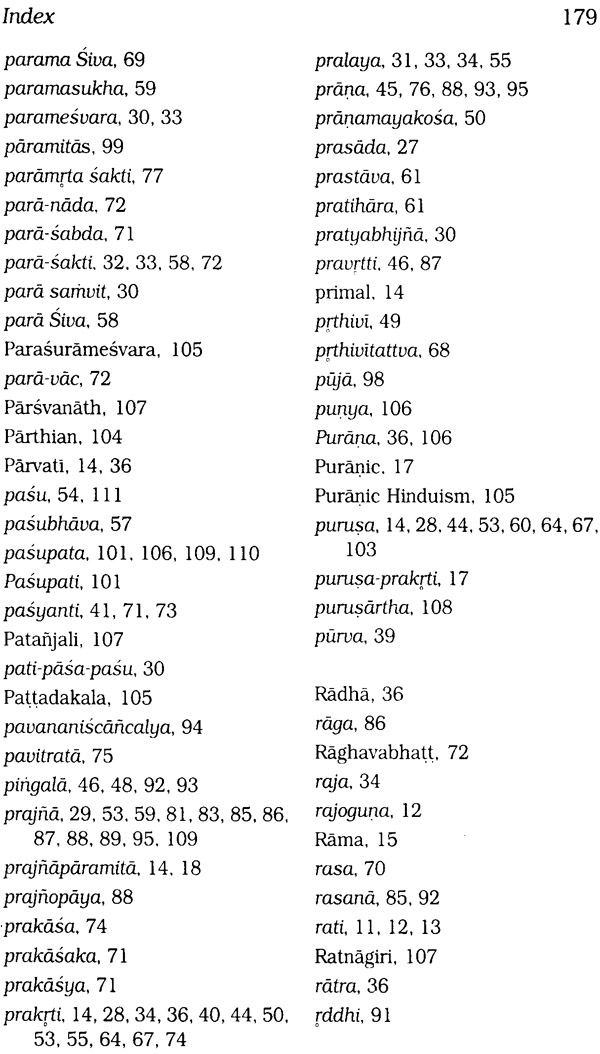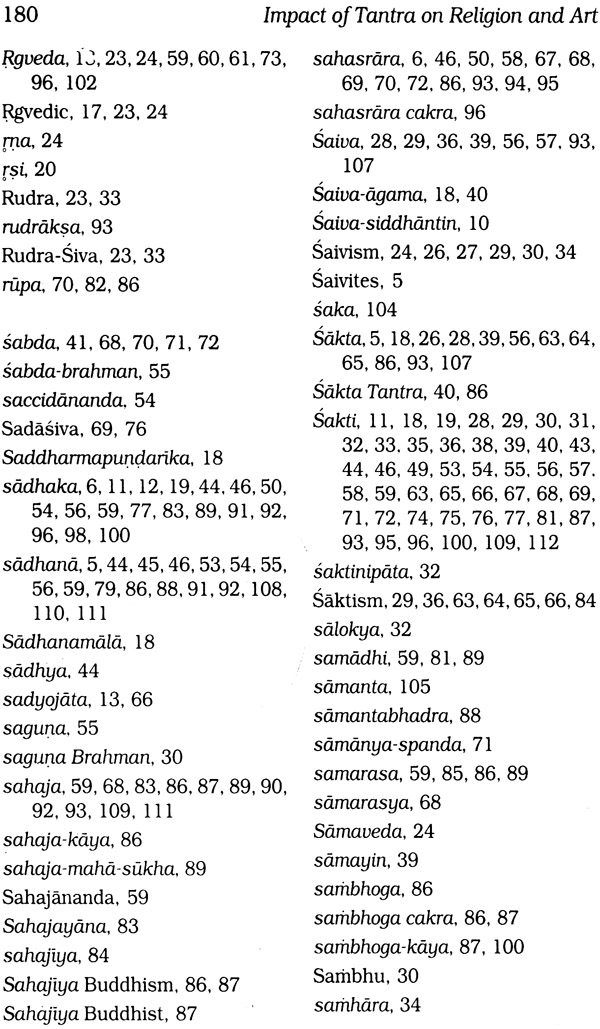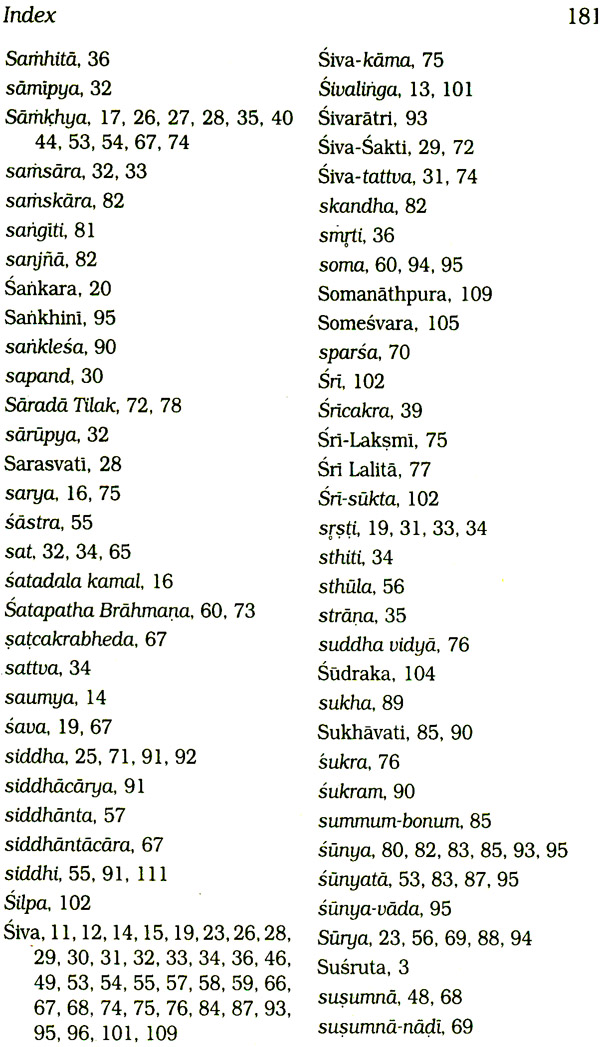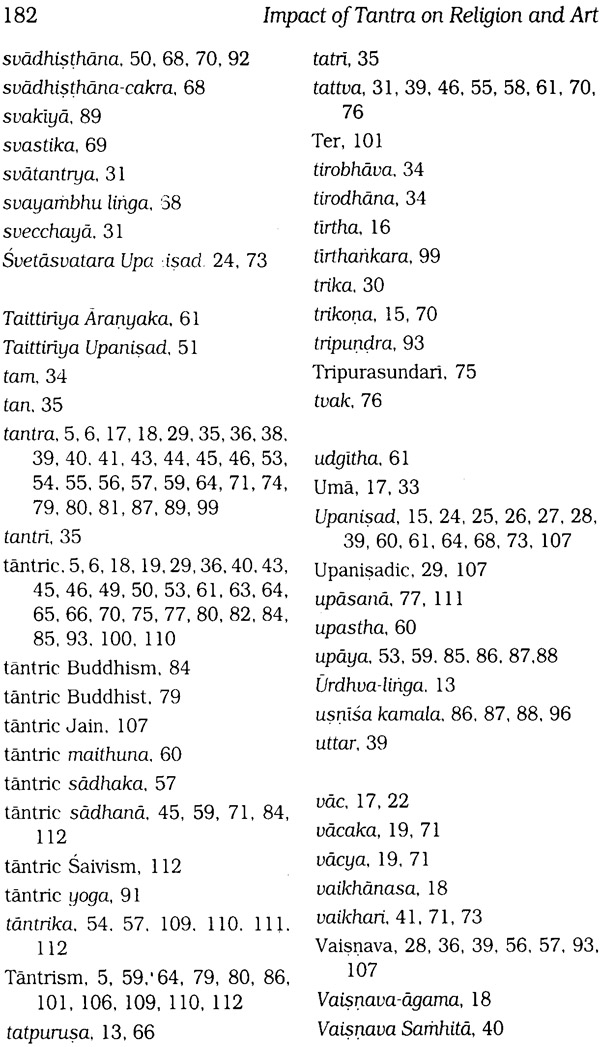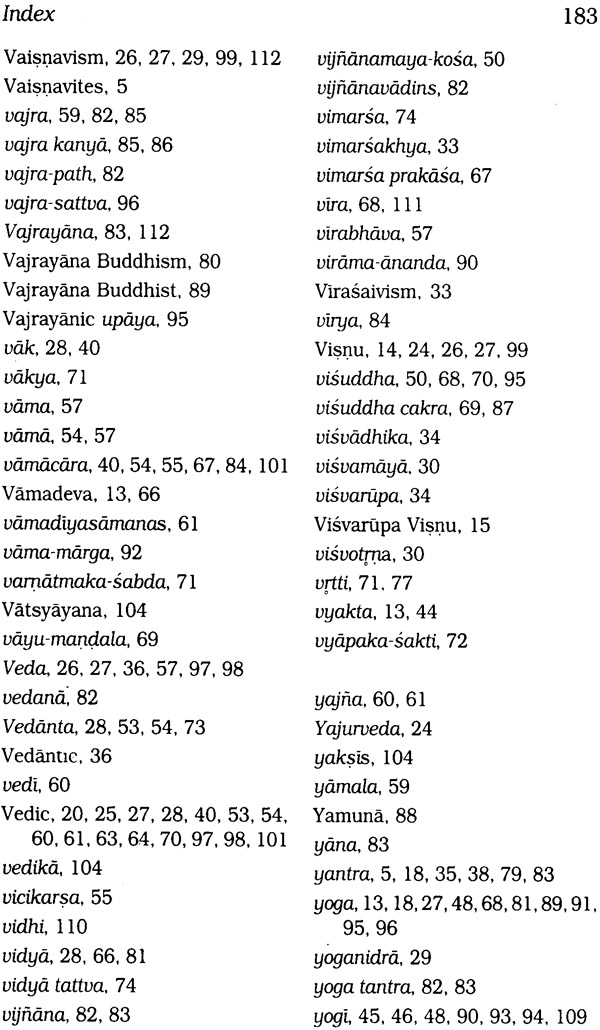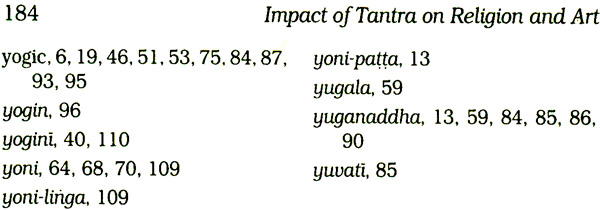
Impact of Tantra on Religion and Art
Book Specification
| Item Code: | IDD154 |
| Author: | T.N. Mishra |
| Publisher: | D. K. Printworld Pvt. Ltd. |
| Language: | English |
| Edition: | 1997 |
| ISBN: | 8124600732 |
| Pages: | 184 (Col.illus.: 23 and B&W.illus.: 6) |
| Cover: | Hardcover |
| Other Details | 8.9" x 5.9" |
| Weight | 440 gm |
Book Description
From the Jacket
With its roots (perhaps) in the prehistoric times, Tantra is a unique, highly complex spiritual tradition of India. Which is hard to define and still harder to be grasped by the non-initiated - largely because of its occult and mysteriously ritualistic elements, often accompanied by equally mysterious mantras, yantras, kriyas and even sexual practices. As a religious philosophy, this esoteric cult of Sakti: the female principle, seeks to discover the source of cosmic power within the human body through intensely specialized yogic activity. And, like yoga, it transcends religious boundaries.
Introducing this non-Vedic, esoteric cult in an altogether fresh perspective, the book looks at tantra: both as a philosophy and as a spiritual tradition in its own right, and how Tantrism has, in the past, been an irresistible influence not only on major Indian religions (Brahmanical Hinduism, Buddhism, Jainism), but on arts as well. Dr. Mishra authenticates his findings with evidence from numerous Vaisnava, Saiva, Sakta, Buddhist, and Jaina texts on religion, philosophy, art and iconography.
The author, who has had long, personal interactions with some of the living tantrikas, also tries to dispel certain distortions woven around tantric religion to contextually offer an unbiased account of its evolution, cultic variations, culture, philosophy, mysticism, and cardinal concepts and tenets. Together with relevant visual material, Dr. Mishra's work will, thus, evoke as much interest in discerning readers as in the scholars of Indian religions, traditional philosophy, arts and art history.
Dr. T.N. Mishra has researched various aspects of Indian philosophy and art and architecture in a career spanning more than three decades. He has published articles in reputed journals on the subject and authored works that include Buddhist Tantras and Buddhist Art; Ancient Indian Bricks and Brick Remains; Westernization of Indian Art and Yoga-Tantra and Sensuousness in Art. At present, he is Assistant Curator at the prestigious Bharat Kala Bhavan at the Banaras Hindu University, Varanasi.
TANTRA, as widely accepted nowadays, refers to a body of literature that spreads, in particular, knowledge of profound things through the aid of yantra or mystic diagrams, and mantra, words possessing esoteric meanings, with the ultimate aim of salvation. It is interesting to note that it is later literature, from the fifth or sixth century onwards, that refers to Tantra as a special religious or philosophical concept; the term Tantra is rather used in a non-religious and ordinary sense in the different philosophical systems prior to that time. The word Tantro, at one time, could be applied to the sacred literature of the Vaisnavites and the Saivites as well though, again, it is now applied solely for the religious literature of the Sakias. The religion and philosophy of the Tantra made a strong impact not only on the religious systems of Brahmanical Hinduism, Buddhism and Jainism but also, on the art and architectural forms of the time.
The Tantric religion, essentially, accords supreme importance to the body. It maintains that the elements comprising the body cannot be dissociated from the environmental elements so that the laws governing the latter may be applied to the body to bring its elements into some kind of order. It emphasises the practical mode of realising the nature of Reality. This practical aspect involves sadhana, an essential part of the Tantric life. Tantrism is associated with two aspects - the sophisticated and the popular, of which the former involves many Brahmanical Hindu elements. An important one is the concept of sakti (energy). Sakti is found in the body as the serpent power or kundalini within the muladhara cakra. It is only by awakening the dormant female energy by yogic exercises and lifting her up through the regions of the five other cakras to the realm of sahasrara that a sadhaka can achieve salvation. The Tantric concept views the act of creation as a result of the union of the Female and Male Principles, the former being the more important functionary.
My earlier writings were largely concerned with the historical romance of the Tantra. The study undertaken here, however, does not deal with the history of Tantric beliefs and practices as such; it is rather an attempt to introduce Tantra in a different perspective, with a specific viewpoint.
This book covers various aspects of Tantric religion, philosophy and art including evolution of the Tantra, fundamental concepts of the Tantra, the tremendous impact of Tantra on Brahmanical Hinduism, Buddhism and Jainism, and the Tantric influence in art and architecture.
The chapters are thematically arranged and they deal with the subject within the span of a wide mosaic. The Tantric religion is extremely interesting: it is mysterious, it provokes curious enquiries, its messages are full of esoteric meanings and its symbols are adequately meaningful. Here, I have tried to explain some of its mysteries and point out certain misconceptions prevailing in the society about Tantric religion and its practices.
In the collection of relevant material for this volume, I am indebted to many scholars and institutions. Of these mention may particularly be made of those scholars whose published books and articles were consulted during the preparation of this volume, and others who supplied me unpublished information during discussions that contributed to the formation of my ideas. I am very much indebted to my spiritual teacher for his help and guidance for over a decade. I am equally grateful to other acaryas and saints for their guidance and suggestions.
I am thankful to Dr. T.K. Biswas, Joint Director, Bharat Kala Bhavan, Banaras Hindu University who studied the manuscript and made valuable suggestions. I am obliged to Dr. Deena Bandhu Pandey, Reader, Department of History of Art, B.H.U. and all my colleagues at Bharat Kala Bhavan, B.H.U. for their help in the preparation of this book.
My thanks are also due to Bharat Kala Bhavan Library, Philosophy Department of B.H.U., Central Library of B.H.U.. Saraswati Pustakalaya, Sampurnanand Sanskrit Viswavidyalaya (Varanasi), and to some personal libraries.
I also wish to mention here the moral support I received from my wife, Vandana Mishra and my daughters, Kavita, Pratima and Jyoti in the course of preparing this volume.
The principles of Tantra were conceived by great minds with the best of intentions. But unfortunately, in course of time, its principles came in for severe criticism and were often decried as ridiculous and detestable. It appears that such conclusions may have been made due to misconceptions about the subject. For one, the mysteries and the esoteric elements in Tantra were neither properly understood nor, where well understood, considered in their right perspective. The mysteries and speculations attached to the concept were also not explained to the desired extent. As a result, the subject remained the preserve of a small group of initiated persons and attempts were never undertaken to popularise the essence of Tantric religion among the common people.
However, some scholars tried to enter into the mysteries of Tantra and they traced the basic principles of Tantra - the nucleus of it, so to say - in the Mother Goddess cult of the proto- historic Indus Valley Civilization. Subsequently, the Rgvedic Devi Sukta discussing the mysteries of Brahma and Vac, the speculations in Atharvaveda, the Brahma-maya of Upanisad, the concept of Puruso-Prakrti of Samkhya Philosophy, Puranic mother goddesses (Ambika, Bhavani, Bhadrakali, Durga, Uma- Mahesvari) offered the required momentum and solid foundations to the concept of the Tantra. The philosophy and the religion of Tantra was thus formulated and in course of time it made a tremendous impact on the medieval religions viz., Brahmanical Hinduism, Buddhism and Jainism. The impact of Tantric tenets also seeped into the medieval paintings and sculptural art of India. The influence of Tantric religion and philosophy is found recorded in the religious texts. The Saiva-agama literature, the Vaisnava agamas like Pancaratra and Vaikhanasa and much of Sakta literature laid bare the notions of Tantric religion and philosophy. Similarly, texts like Manjusrimulakalpa, Saddharmapundarika, Prajnaparamita, Sadhanamala, Nispanna Yogavali and some other texts incorporated different notions and rituals of Tantra in Buddhist religion, philosophy and iconography.
The earlier concept of Buddhism lost itself significantly in the maze of Tantric mysticism and esotericism, and it was practically overwhelmed by the introduction of host of mudras, mandalas, kriyas and caryas, Buddhism now began to incorporate elements like magical spells, exorcism, recognition of demons and female deities (Sakti), and at the same time, yoga and sexoyogtc practices. All these resulted in a significant change and what emerged came to be called Tantric Buddhism. Likewise, significant changes were noticed in the concept of Brahmanical Hinduism. Hindus, under the spell of Tantra, concentrated on jnana (philosophical doctrines), yoga (meditation), kriya (activities such as idol-making, temple building), and carya(observances). They started paying attention to mantras (prayers), bijas (mystic syllables), yantras (diagrams) and nyasas (identifying deities in different parts of the body of the devotee). Tantrism did not spare Jainism even. The cult of mother goddess, magical rites, the efficacy of mantras and spells, incantations, etc. that were accorded recognition in the Jain pantheon, were, in fact, imbibed from Tantrism. However, the spell of Tantrism could not significantly affect the Jain religion and it continued with certain rigid rules and prescriptions of its own.
Any understanding of the Tantric religion would require a recognition of some of its essential characteristics.
The Tantric religion gives supreme importance to the body (deha or kaya) and it categorically admits that the mysteries of the universe may be sought in the body itself. Of the two aspects of Tantrism, viz., the sophisticated and the popular, the former incorporates a number of Brahmanical Hindu elements - one of which is the concept of Sakti. Sakti resides in human body as the serpent power (kundalini) within muladhdracakra. The dormant female energy is awakened by yogic exercises and then she is to be taken up through the regions of five other cakras to the realm of suhasrara. If a sadhakagets success in this nearly impossible endeavour, he attains salvation and the highest virtues. The term mantra includes two powers viz., the vdcaka and vacya. The word vacaka embodies words as well as sounds. There are two grades of sound and these are called bindu and nada. Bindu is Siva, bija is Sakti, while the term ndda combines Siva and Sakti. Siva is recognised as the male principle and Sakti denotes the female principle, and through their union (kama-kala) proceeds creation (srsti). Siva is passive, Sakti is active and without Sakti, Siva is rendered into sava (corpse).
A brief discussion of some aspects of Hindu thought and of the Indian philosophical tradition, with reference to the mystical in it, in what follows would provide a background-of-sorts to understanding the Tantric view of things.
| Preface | 5 | |
| List of Illustrations | 11 | |
| 1 | Introduction | 17 |
| 2 | Religious Mythology | 23 |
| 3 | The Concept of the Tantra | 35 |
| 4 | Philosophy of the Tantra and Sadhana | 43 |
| 5 | Evolution of the Tantras | 53 |
| 6 | Concept of Sakti and Saktism | 63 |
| 7 | Tantric Culture of Buddhism and its Tenets | 79 |
| 8 | Siddhi, Siddha and the Natha Cult | 91 |
| 9 | Influence of Tantra in Art | 97 |
| Visuals | 113 | |
| Bibliography | 145 | |
| Glossary | 155 | |
| Index | 173 |
